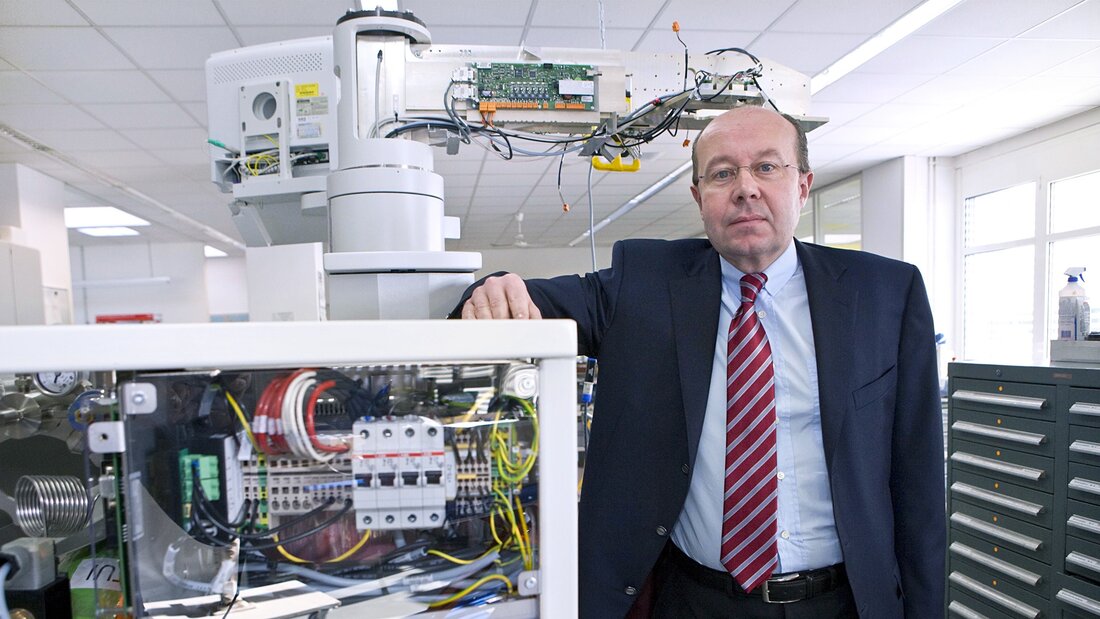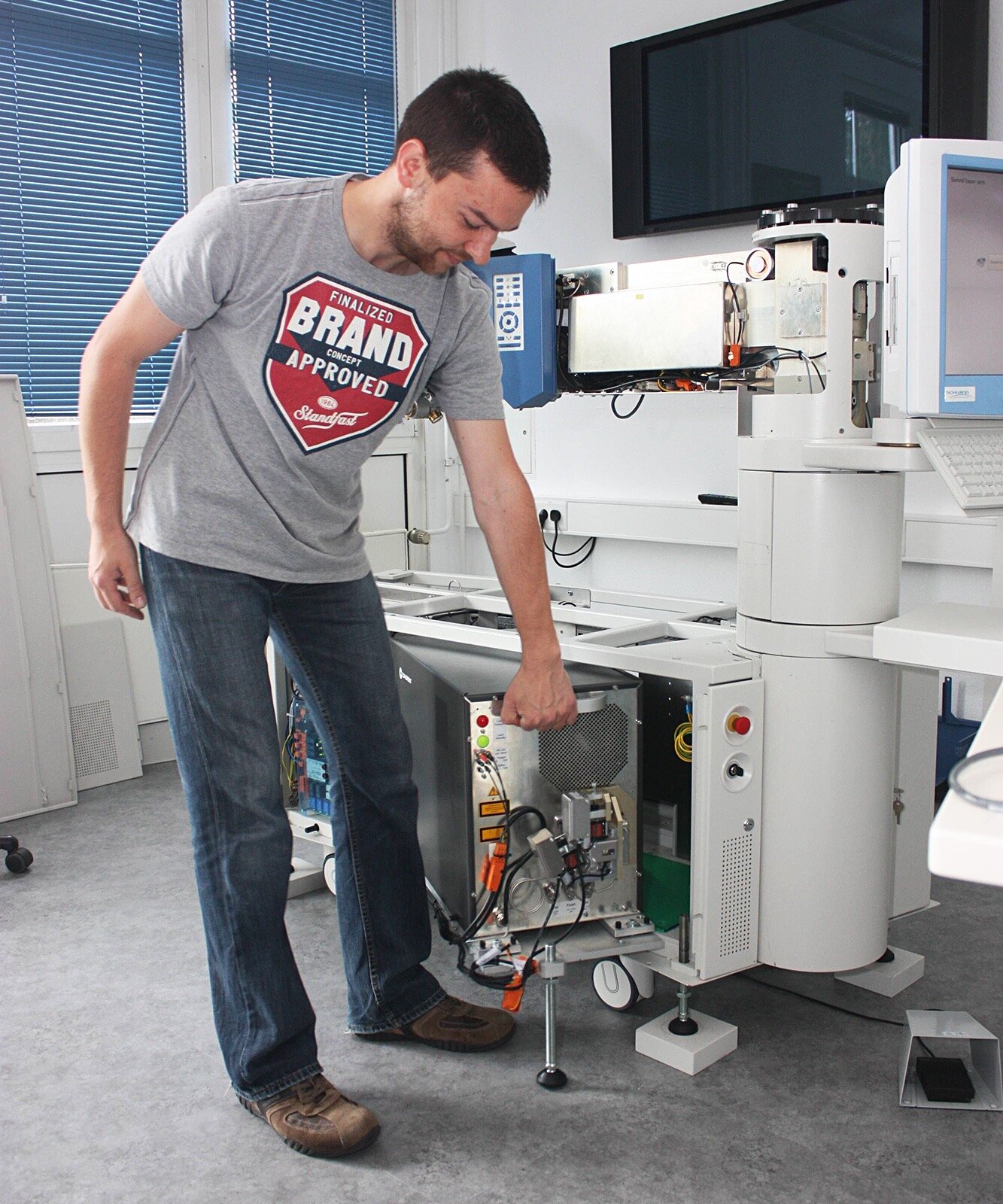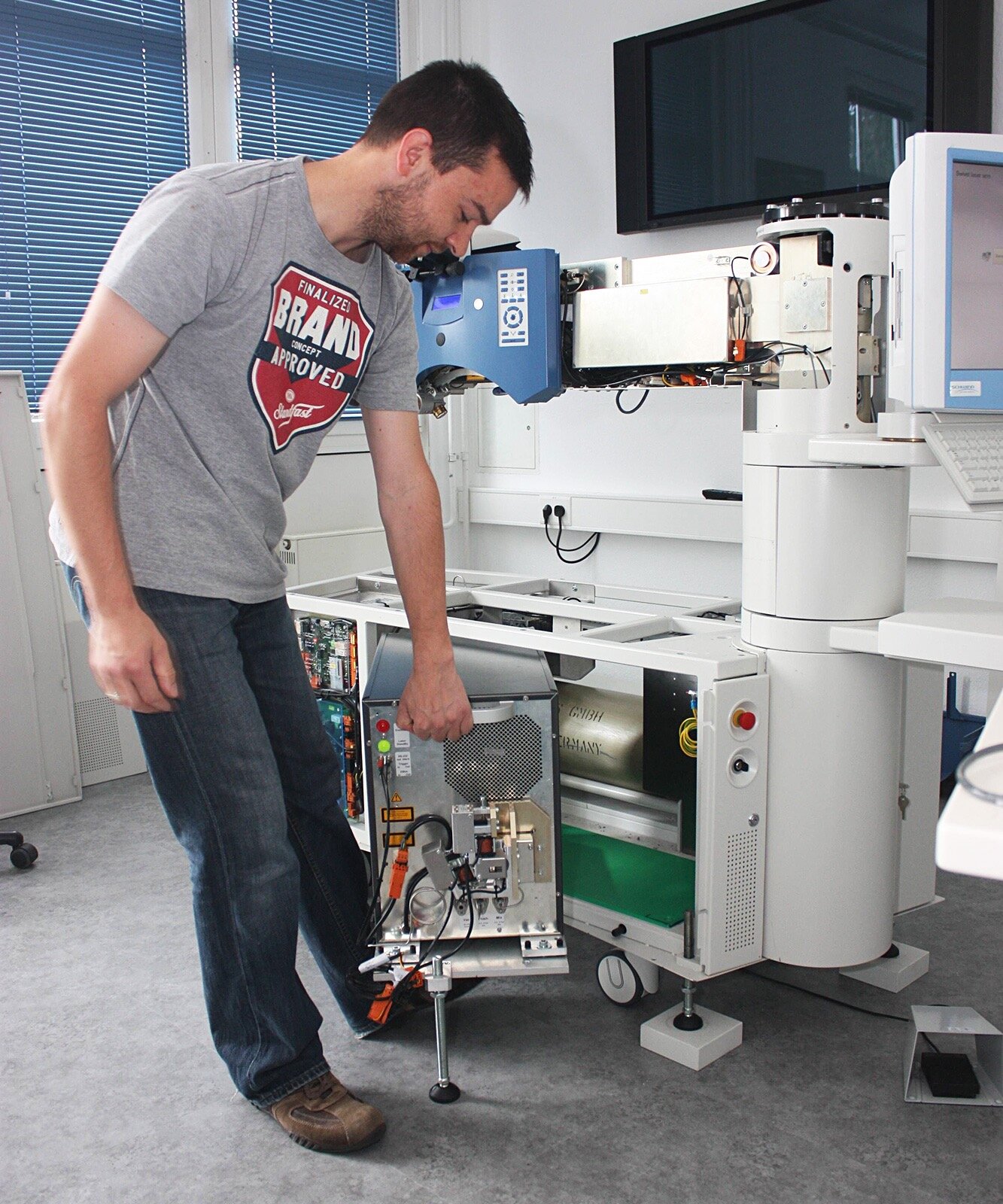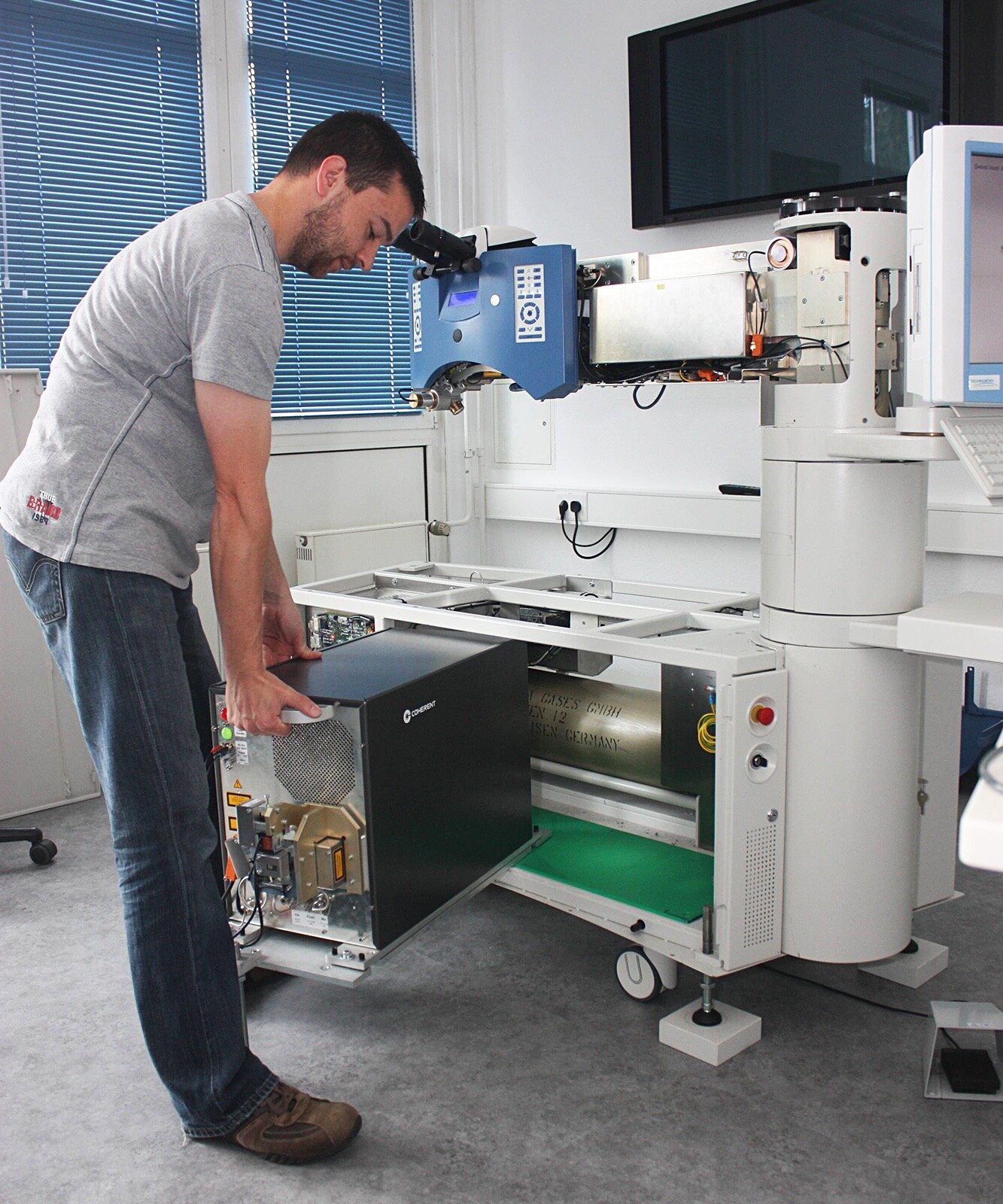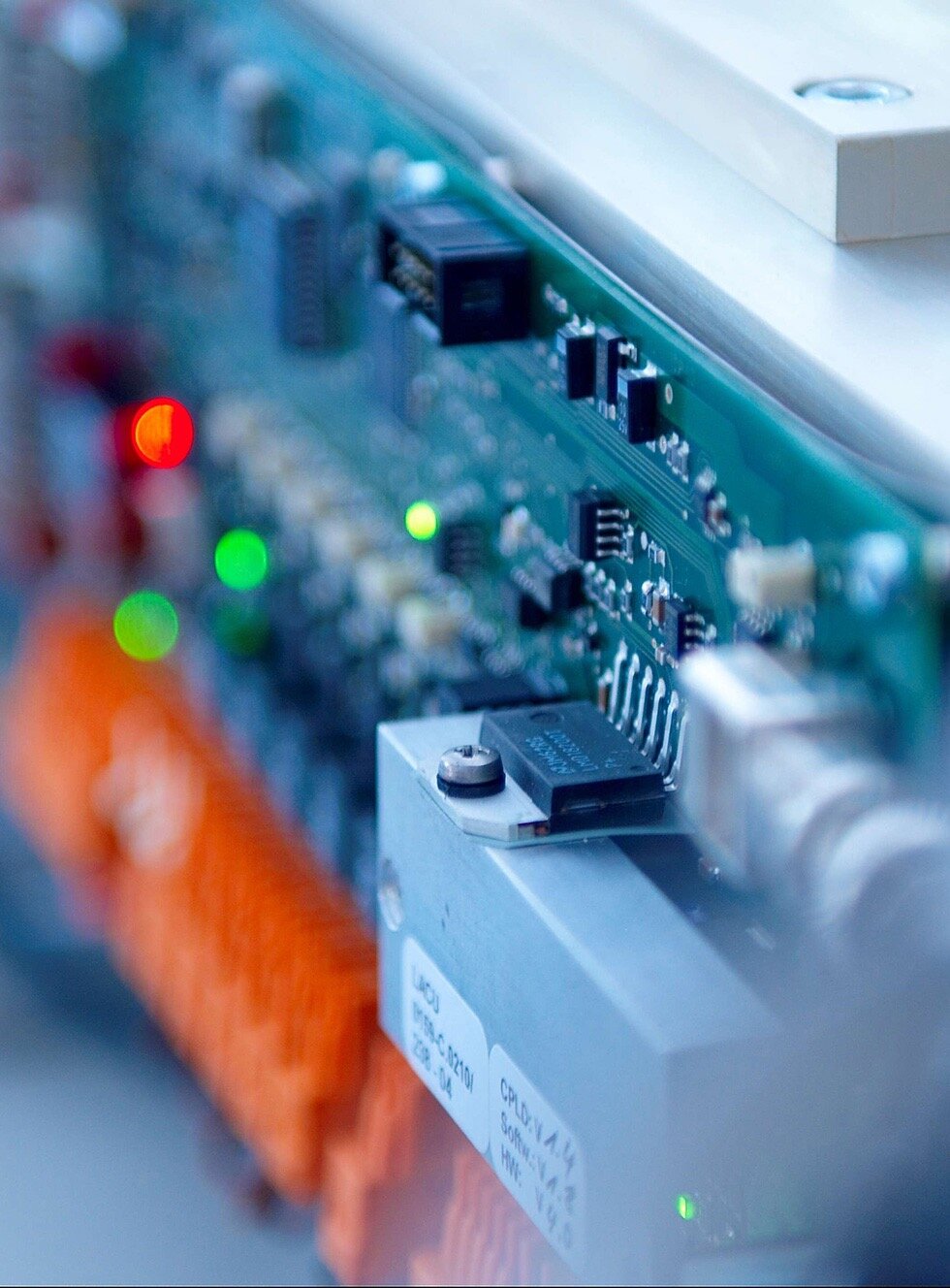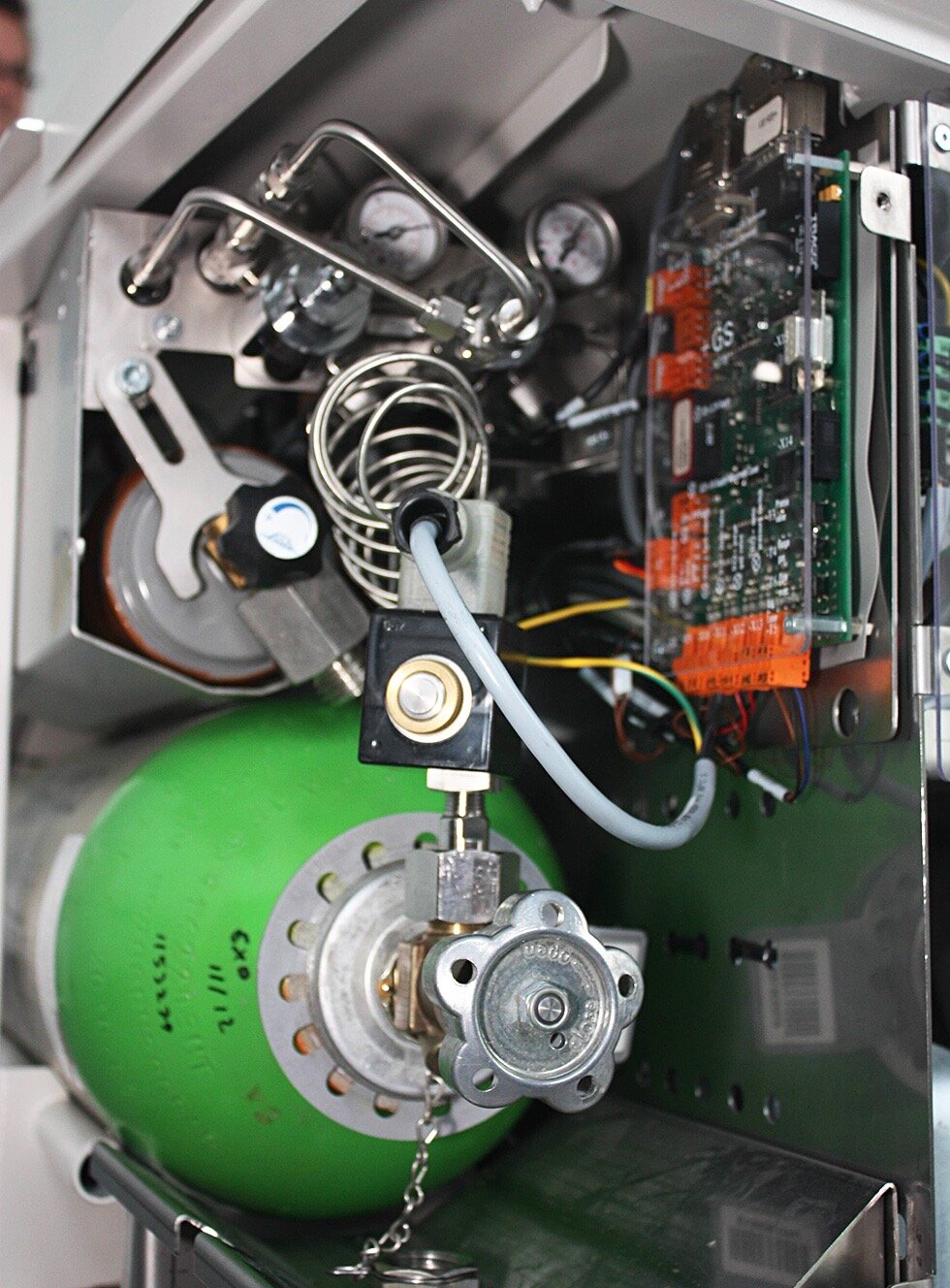Geschäftsführer Rolf SCHWIND zeigt das „Innenleben“ der AMARIS Technologie
1. Vacuum-guided laser beam
Normally, laser systems use nitrogen in order to protect the laser beam from influences such as humidity or ozone. With the AMARIS laser systems the laser beam is guided through an enclosed beam path in a vacuum. This has significant advantages:
Lifetime resonator and laser optics
Transport of the laser beam in a vacuum is very energy efficient – no energy is lost. For this reason the AMARIS can be operated at an optimized energy level. Advantage: This ensures optic-preserving operation of the laser system. The lifetime of the resonator optics and laser optics is therefore longer and service costs are lower than those of other laser systems available in the market.
High quality of the laser beam
The laser beam is hermetically sealed in a vacuum. No disturbing elements can impair the quality of the laser beam and there is no deviation of results to be expected as, for example, could occur with the use of nitrogen. This as well contributes to the especially precise treatment results of the AMARIS laser systems compared to other laser systems.
No nitrogen bottle required
No use of a nitrogen bottle is required – and thus there is no manual changing of bottles. Furthermore, nitrogen quality is not an issue.
2. Modular construction
The SCHWIND AMARIS laser control systems are modularly constructed and distributed among several control units. Laser upgrades are thus easy to carry out. They only require exchange or modification of parts to a small extent.
3. Replacement of components
The laser source is the most cost- and service-intensive component of a laser system. SCHWIND pursues the goal of keeping labor and service costs as low as possible:
- The laser source can be swivelled and does not need to be removed for maintenance.
- In the case of a necessary component replacement, only the respective piece part is replaced in the AMARIS laser systems - for example, if laser resonator optics wear out, only the optics and not the entire laser source is replaced. If one would compare the AMARIS with a car, this means the following: If the V-belt is worn out, SCHWIND only replaces this belt and not the entire engine.
Service technician Daniel Fries swivels out the laser source
4. Longer gas lifetime
With a new SCHWIND AMARIS, a gas exchange is necessary only once per week. Thus a gas bottle can be used significantly longer than with other laser systems available on the market. This reduces service costs. The gas exchange procedure is fully automatic. The user starts the gas exchange in the user software with a mouse click and does not have to manually open or close any valves or gas bottles.
5. Easy and objective calibration
Calibration of AMARIS laser systems takes place in accordance with unique objective criteria. Contrary to other laser systems available on the market, evaluation of the result is carried out automatically.
For example, subjective misadjustments based on evaluation of results with a colour scale, are prevented. Treatments with the AMARIS laser systems can be performed up to two hours after a fluence test before the next fluence test is required. The entire test is finished within three minutes.
6. Close support
A team of 20 specialists supports installation, upgrades, maintenance and supply of repair parts for the SCHWIND AMARIS laser systems. The specialists from SCHWIND’s Technical Service department are on-call via the Service Hotline 365 days a year from 6:00 a.m. to 9:00 p.m. CET. In nearly all cases, a quick solution is achieved per remote diagnosis (ie. log file analysis).
